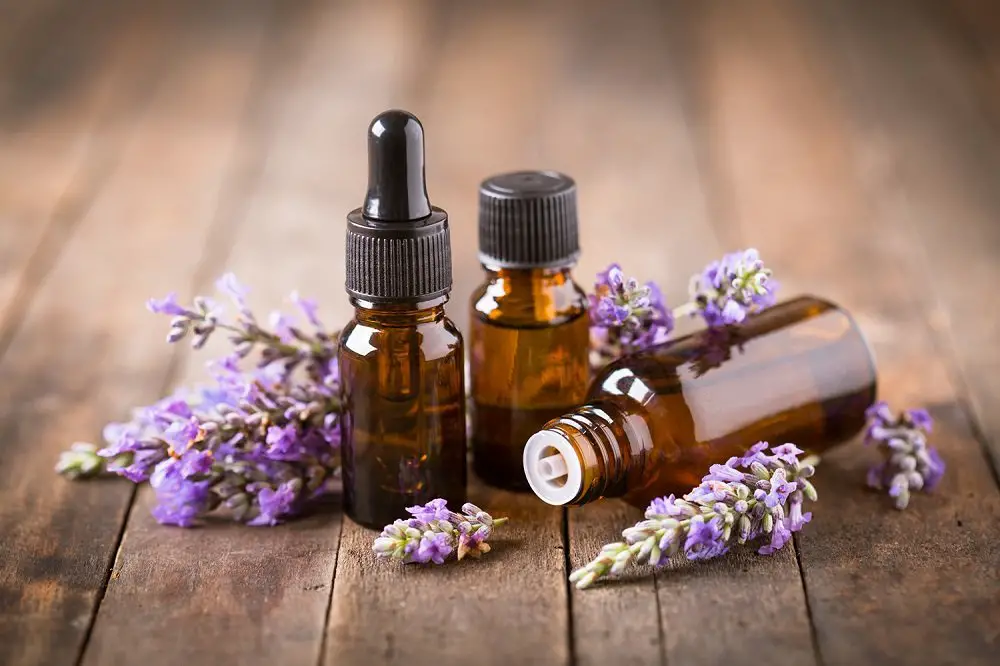Unless you live somewhere that’s always damp; you probably need to add some moisture to the air, at least in the wintertime. Using a diffuser or vaporizer can help with the issue. Ultimately that means you breathe easier. However, that’s not all you can do with these useful little devices. Both diffusers and vaporizers are a superb way to add some essential oil essence to your home, but which one should you use? Is there a significant difference, or are they two names for the same thing? The short answer is no, they are not the same, although they serve similar functions. You’d benefit from having both around the house, and I’ll explain why. Once you understand the fundamental differences, you can fill your air with delightful scents and a fair amount of moisture all year. Plus, you won’t need to use extra electricity to correct the temperature.
Essential Oil Diffusers Vs. Vaporizers
What’s the big difference between an essential oil diffuser and a vaporizer? An essential oil diffuser uses air, water, or heat to distribute essential oil, while a vaporizer heats water, creating steam. They both work well for raising the moisture level in your home or office. However, you should use them in the appropriate seasons.
Don’t let the names confuse you. An essential oil diffuser is, as the name suggests, made to house essential oil and water blowing out a fine refreshing spray. Meanwhile, a heated vaporizer isn’t always meant to use oil. There’s a chemical difference between a cold disbursal method and one that heats oil after all. Applying heat is also cooking the oil.
Although that isn’t necessarily a bad thing, there are some unique issues with using heat for essential oil. On top of the changes your favorite natural scents undergo while cooking, there’s the issue of overheating. It’s vital to use a high-quality vaporizer if you plan to add essential oil.
Because some essential oils have a lower rate of boiling and combustion, an overheating vaporizer is problematic. You don’t want to risk a fire just so the house will smell nice. Hence, I recommend only adding essential oils to vaporizers that have a well at the top to hold them separately.
Hot or cold, vaporizer or diffuser, you can enjoy a beautifully scented, calming atmosphere year-round. I strongly recommend keeping both options available in your home.
Diffuser, Vaporizer, Humidifier, Nebulizer
Although the names can be a bit confusing, any product labeled diffuser, vaporizer, humidifier or nebulizer will put moisture into your air. Unfortunately, companies seem to use the names interchangeably regardless of the original technical differences. I explained the difference between the hot vaporizer and a cold diffuser already, but what about the other two?
Well first off, a humidifier is traditionally a large diffuser. It expels cold air vapor, just like the often smaller essential oil diffusers. However, you will find that humidifiers often specifically instruct you not to use essential oils in their tanks.
A nebulizer, on the other hand, is usually meant to provide medication and often moisture directly to the lungs. Alternately, the non-medical nebulizers only give hot or cold moist air. These devices have a mask piece that fits over your face.
Multi-use options exist, as well. With options like the two-in-one, hot or cold steam machines, and humidifiers that have nebulizer attachments, it’s easy to get confused. What you should take away from this homogenization is one crucial fact; You need to read the description of a device’s capabilities more than you need to know its name.
Why Use A Vaporizer
Choosing a vaporizer instead of a diffuser will do more for moisturizing your air than it will for disbursing scent throughout your home. Ultimately, it depends on what you want to do to the atmosphere. However, you can also choose a personal vaporizer that doesn’t scent your entire home.
If this is your goal, I recommend the MABIS Personal Steam Inhaler Vaporizer with Aromatherapy Diffuser. Although you could also call this product a nebulizer, it provides you with warm steam and a fantastic way to get an essential oil boost at the same time. Moreover, since it’s personal, it won’t interfere as much with other scented candles or other people in your home who are allergic to your essential oil. Find out more on Amazon when you click here.
If your goal is primarily to get aromatherapy and to breathe easier on a personal level, then a nebulizer style vaporizer is ideal. Similarly, you can use a larger vaporizer in winter when you don’t want cold mist chilling your home. However, for most of the year, a diffuser is the better way to get scented and humidified air into your home.
Unless you live somewhere unusually cold, using a warming vaporizer in spring, summer or fall can make indoor air feel a bit oversaturated and heavy. During dry winter months, the vaporizer is perfect for keeping things toasty while still keeping your throat from feeling sore. Moreover, humidity can help keep you healthy by providing your sinus membranes with much-needed water in a form they can absorb.
The Four Essential Oil Diffusers
Diffusers come in four different styles. Evaporative, heat, humidifying, and nebulizing diffusers all have one thing in common. They all disburse essential oils. Which one you prefer is up to you. However, I suggest a moisturizing option unless you already live somewhere like a swamp or rainforest where moist air is no issue.
Evaporative Diffusers
Just like an evaporative cooler, this variety of diffuser uses a ‘damp’ pad and forced airflow to move essential oil around the room or area. Smaller evaporative diffusers can plug into a wall socket like a nightlight. Some even plug into a computer’s USB drive.
Think of these as a combination of a glade plug-in and a swamp cooler. The evaporative diffusers are less standard than other types, and typically not very large. Hence they’re better for personal use in a bedroom or small office.
Additionally, non-electric personal diffusers are also in the evaporative category. The Flower Burst Essential Oil Aromatherapy Diffuser Necklace is a great option for eco-minded essential oil lovers. You get all the benefits of your favorite oils and none of the wasted water or power. Better still, this hypoallergenic silver necklace is gorgeous and comes with nine rainbow color option washable insert pads. To get yours from Amazon, click here.
Heat Diffusers
Sometimes known as burner diffusers or oil burners, a heat diffuser uses heat. While warm steam humidifying diffusers are in this category, the traditional candle powered type is more familiar to most essential oil lovers.
If you’re looking for a warm option for winter, and you enjoy candlelight, these make perfect accessories for your home decor. Moreover, candle powered diffusers are best with oils that become more fragrant as they cook. People who live in moist climates should choose this option.
I recommend the simple and elegant Red Silk Essentials Iron & Copper Essential Oil Burner. The lovely hammered bowl conducts heat evenly for a wonderful warm aromatic experience. Furthermore, these are incredibly simple to use. Simply fill the bowl about two-thirds with your oil and grab any tealight candle of your choosing. You will find these lovely Oil Burners on Amazon when you click here.
Humidifying Diffusers
When you’re looking for a diffuser that creates the easiest to absorb essential oil particles, this is the way to go. Aromatherapy uses like eucalyptus for a cold, or citrus for focus while you study or work is best from this type of diffuser. However, humidifying diffusers also work well to make a room smell pleasant for pure enjoyment.
It’s likely these diffusers, also called ‘ultrasonic,’ are most familiar to you. In recent years this style has become incredibly popular, and we’ve started seeing them everywhere. Fortunately, that also means they are easy to find.
Instead of using heat or air to break up the water and essential oil, these diffusers use vibration. With no hot pats, the oils won’t cook. Furthermore, a vibration-based diffuser makes incredibly tiny water and essential oil particles. Because they create ultrafine particles, your lungs can more easily take in the effects.
Check out the stunning Bronze Art Aromatherapy Essential Oil Ultrasonic Diffuser from Amazon. This quiet device produces continuous essential oil-filled mist for your space. Use the timer function when you go to bed, or to keep it from running too long. However, you needn’t worry about this model burning out because it has automatic anhydrous shut down when the water runs out. See the superb reviews right here.
Nebulizing Diffusers
This variety of essential oil diffuser utilizes an entire bottle of oil and no water. Instead, the oil diffuses under focussed, pressurized air. Essentially, it is a rapid method for evaporating and then moving the oil out to flow around your home. Nebulizing diffusers are best for large spaces.
If you are looking for a pure scent-based effect, this style is the best choice for you. You may also see these referred to as atomizers. Because the oil rapidly breaks up into micro-droplets, the term atomizer refers to the droplets.
Try the TOMNEW Essential Oil Nebulizer Diffuser from Amazon. The pretty glass bottle will turn your favorite scents into a room accessory to beautify your space. Moreover, with no heat, water, or plastics to worry about, this essential oil diffuser is as eco-friendly and easy to use as possible. To learn more, click here.
Final Thoughts
Though the terminology can get confusing, thanks to manufacturers using incorrect and umbrella terms, I recommend a diffuser for your essential oils. Vaporizers are often better for moisturizing the air than aromatherapy. Regardless of the name, you’ll love what they do for your home.
Choose your diffuser based on the season and your environment. Dry options like evaporative and oil-burning diffusers work best in moist climates. Meanwhile, the water types like nebulizing and humidifying diffusers are better in dry climates.
Whether you want to use your oils for pretty smells, or functional aromatherapy, a high-quality diffuser will help. However, if the main benefit you’re seeking is humidity, stick to a vaporizer or traditional humidifier.

